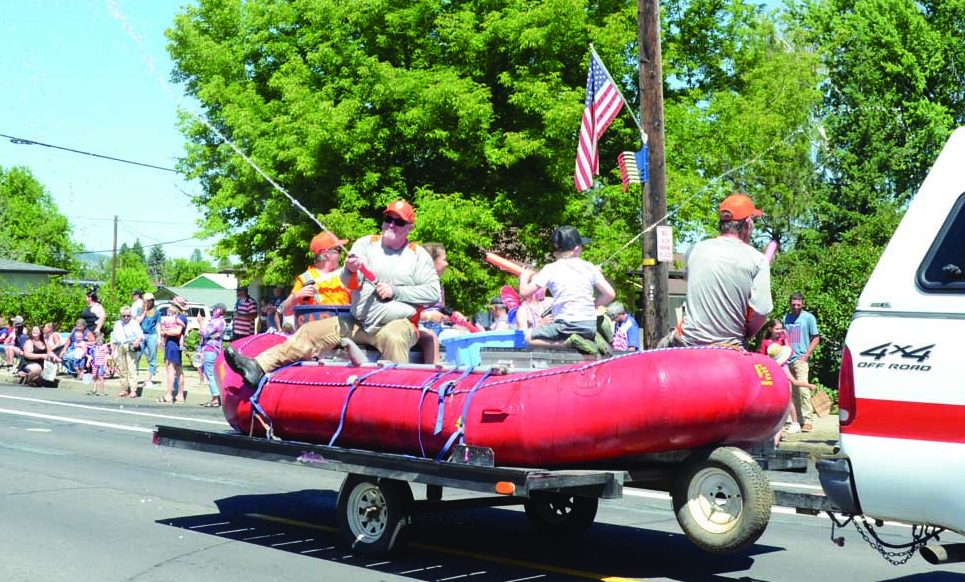Singing the praises of stoneflies
Published 4:54 am Wednesday, June 21, 2017

- Submitted photo The golden stone stonefly is important to fish and anglers in Wallowa County.
Each spring around Memorial Day, I have clients come to me and ask what the giant bugs covering their tents and cots are and more importantly, “do they bite?”
The big bugs are golden stones, a hatch anticipated by both fish and fisherman. Like a child anticipating Christmas morning, anglers dream about the day big stoneflies come in late spring, spending countless evenings tying fly patterns mimicking the insect and concocting new variations of old fly patterns that will surely fool every trout the fly passes over.
While some rivers have an abundance of the stonefly commonly called a salmonfly, northeast Oregon is blessed with a healthy population of Golden Stoneflies.
We have two species in abundance: H. pacifica and C. californica. Both spend two to three years in the river as nymphs. H. pacifica is the larger and more abundant of the two. With its “salmon” colored head, orange to yellow underbelly and large size up to two inches, anglers often mistake it for a salmonfly.
C. californica is smaller with the largest closer to 1 1/2 inches long. Their heads are darker, not nearly as round, and the underbelly is yellow turning to dark gray or black.
To confuse things further, we also have small half-inch to three-quarter inch long yellow stoneflies. These smaller yellow stoneflies are often labeled yellow sallies in the fishing world, and although they hatch in large numbers a week or two before the golden stones, the hatches overlap giving resident rainbows an abundance of stoneflies to eat.
Golden stones crawl to the bank just after dusk and hatch on rocks, trees and even your raft. Moss-covered rock walls on the Grande Ronde are covered with hundreds and perhaps thousands of shucks after the hatch.
An examination of nearby brush reveals stoneflies stacked up mating. Warm afternoon air triggers the females to take flight, and the huge bugs begin dive-bombing the water, trying to just touch the water in order to deposit their eggs. Inevitably, many golden stones end up in the water becoming trout food.
Guiding both whitewater and fishing trips weekly on the Wallowa and Grande Ronde, I have been lucky enough to witness these hatches each spring between Minam and Troy. The hatch normally begins around Memorial Day in the Troy area and progresses its way upriver hitting Minam mid-June on an average year.
The big stoneflies live up to a week, and the hatch can be heavy for up to two weeks. Random individuals pop up throughout the rest of the summer, and if you were completely obsessed with following the stonefly hatch, you could continue up in elevation on the Minam River, Wallowa River, Bear Creek and the Lostine River following the hatches up into the wilderness area as summer progresses.
The population does begin to dwindle as you get higher in the river systems.
During the early days of the hatch anglers find success with big dry flies late in the afternoon and into the evening when females are returning to the river to deposit eggs. If you fish enough, you will experience some of the best dry fly action of the year when big rainbows willingly come to the surface all day long.
Although you can use fly patterns as large as size 4, it is more productive to fish medium-sized patterns in the 6-10 range with size 8s my favorite.
Some of my favorite commercially tied patterns are Stimulators, Chubby Chernobyls, Parachute Madame X, Hedgehog and the Fluttering Salmon Fly. Most important factors for fly selection is orangish to yellow color, high buoyancy, easy visibility for you as an angler and the addition of rubber legs on any fly pattern increases it’s fish catching ability.
To dramatically increase your catch, tie a second fly imitating the nymph 16-inch below your dry fly. This is commonly referred to as a “Hopper Dropper” setup, but in this case you will be imitating both the adult and nymph stage of the stoneflies life cycle.
Grant Richie and his wife have been operating the Minam Store and Motel, offering raft rentals, shuttle service, and guiding float and fishing trips since 2011. His grandparents lived and worked in Hells Canyon on the Oregon side for the first half of the 20th century. He has been fishing, hiking and floating the rivers and canyons of northeast Oregon for the past 20 years since attending college at Walla Walla Community College and Whitman College in Walla Walla.





